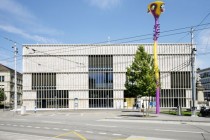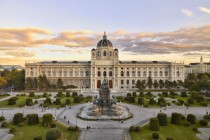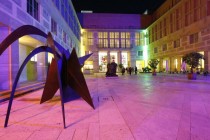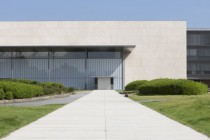| Kazan Kremlin |
145. |
191 |
Russia |
Kazan |
|
|
Art
|
More |
Kazan Kremlin erected by the Tsar of Russia Ivan Grozny in the 16th century on the ruins of the former castle of the Kazan khans built from the 10th century.
Main objects:
- Annunciation Cathedral,
- Söyembikä Tower,
- Spasskaya Tower.
The museum in its present shape as the Museum-reserve "Kazan Kremlin" was established in 1994. The entire museum complex includes:
- Museum of the History of Statehood of Tatarstan,
- Center "Hermitage-Kazan",
- Museum of Islamic Culture,
- Museum of Natural History of Tatarstan,
- Museum of the Cannon Yard,
- Exhibition Hall "Manege",
- Museum of the History of the Annunciation Cathedral,
- Museum of the Great Patriotic War,
- Museum of Fine Arts of the Republic of Tatarstan - Art Gallery.
|
| Kelvingrove Art Gallery and Museum |
116. |
192 |
United Kingdom |
Glasgow |
|
|
Art
|
More |
Kelvingrove Art Gallery and Museum established in 1901.
Has a collection of military items and natural history. The painting collection includes paintings by Rembrandt, Monet, Renoir, van Gogh, and Dalí.
|
| King Abdulaziz Center for World Culture |
277. |
297 |
Saudi Arabia |
Dhahran |
|
|
Art, history, natural... history, ecology
|
More |
The King Abdulaziz Center for World Culture (Ithra) opened to the public in 2018.
Ithra is Saudi Aramco's flagship corporate social responsibility initiative and the largest cultural contribution in Saudi Arabia. Ithra includes a library, knowledge tower, idea lab, cinema, theater, Great Hall, energy exhibit, museum and children's museum.
The museum part includes four galleries:
- modern art
- art and history of Saudi Arabia
- Islamic art
- natural history and ecology
Ithra's collections include, among others, a folio from the Blue Quran and fragments from the Holy Quran from around 750 AD.
Ithra covers an area of over 80,000 square meters.
|
| Kinkaku-ji |
199. |
205 |
Japan |
Kyoto |
|
|
Temple
|
More |
Kinkaku-ji (Gold Pavilion) is part of the Zen Buddhist complex of temples founded at least in the 14th century.
There is a Jotenkaku Museum in the Shokoku-ji main temple area of the complex. The Jotenkaku Museum houses, among others, 5 National Treasures of Japan. The museum exhibits works by painters such as Tensho Shubun, Sesshu Toyo, Josetsu and Ito Jakuchu.
The temple complex also includes the Ginkaku-ji (Silver Pavilion).
|
| Kiran Nadar Museum of Art |
346. |
303 |
India |
New Delhi |
|
|
Modern and contemporary... art
|
More |
Kiran Nadar Museum of Art (KNMA) a private museum sponsored by the Shiv Nadar Foundation opened in 2010.
KNMA presents works from India, the subcontinent and South Asia from the late 19th to the 21st century.
The collection includes over 8,000 works.
The New Delhi location occupies more than 1,670 square meters and the Noida location more than 1,200 square meters of exhibition space.
|
| Kunsthaus Zürich |
365. |
327 |
Switzerland |
Zürich |
|
|
Art
|
More |
The Kunsthaus Zürich traces its origins back to 1787, opened in 1910.
The Kunsthaus Zürich collection includes works of art from the 13th century to the present day. The collection includes works by, among others, Claude Monet, Edvard Munch, Pablo Picasso and the Swiss Ferdinand Hodler, Alberto Giacometti and the Dada movement.
Kunsthaus Zürich has 11,500 square meters of exhibition space.
Photo credit: © Franca Candrian, Kunsthaus Zürich
|
| Kunsthistorisches Museum |
98. |
210 |
Austria |
Vienna |
|
|
Art
|
More |
Kunsthistorisches Museum (KHM) opened in 1891.
Most of the collections are the collections of the imperial Habsburg family. The collections are divided into a gallery of paintings, art of ancient Egypt, Antikensammlung, Kunstkammer, Münzkabinett, and a library. KHM presents paintings for example: Raphael, Dürer, Titian, Caravaggio, Rubens, Rembrandt, Velázquez.
©KHM-Museumsverband
|
| Kunstmuseum Basel |
358. |
218 |
Switzerland |
Basel |
|
|
Art
|
More |
Now operating under the name of Kunstmuseum Basel, it opened its collections for the first time in 1671.
The museum there is in 3 locations: Hauptbau (1936), Neubau (2016), Gegenwart (1980).
The Kunstmuseum Basel has, among others, the largest collection of paintings by the Holbein family in the world, works by Martin Schongauer, Matthias Grünewald, Arnold Böcklin, Ferdinand Hodler, Claude Monet, Camille Pissarro, Vincent van Gogh, Pablo Picasso, Georges Braque, Fernand Léger, Paul Klee, Oskar Kokoschka, Mark Rothko, Andy Warhol, Jasper Johns, Frank Stella, Joseph Beuys, Gerhard Richter, Gabriel Orozco. The entire collection covers the last 700 years of art history.
The collection includes approximately 4,000 paintings, sculptures, installations and videos, as well as 300,000 drawings and graphics.
Kunstmuseum Basel, Hauptbau
Herbst 2014
Julian Salinas
|
| Kyiv Pechersk Lavra |
254. |
204 |
Ukraine |
Kyiv |
|
|
Temple - monastery
|
More |
The Kyiv Pechersk Lavra one of the oldest Orthodox monasteries in Eastern Europe.
The first monastery was built in a natural cave near the Dnieper River in 1051. The first above-ground church, the Church of the Dormition, was constructed in the mid-11th century. Byzantine architects supervised its design, blending local Slavic styles with Byzantine influences.
In the 17th century, the monastery underwent significant transformation during the reign of the Cossack Hetmanate. Lavish Baroque architecture replaced many medieval structures.
The complex has over 100 architectural structures, including Orthodox churches, chapels, bell towers and caves. The main ones include:
- Dormition Cathedral
- Great Bell Tower (height 96.5 meters)
- Gate Church of the Trinity
- Far Caves ("Dalshe Pechery")
- Near Caves ("Blizhnye Pechery")
- Museum of Historical Treasures of Ukraine
- Museum of Books and Printing
- Fortress Walls and Towers
The Kyiv Pechersk Lavra occupies a vast area of approximately 28 hectares.
|
| Kyoto National Museum |
342. |
246 |
Japan |
Kyoto |
|
|
National - art,... archaeology
|
More |
Kyoto National Museum (KNM) opened in 1897. It has been using its current name since 1952. KNM focuses on pre-modern Japanese and Asian arts and crafts. Kyoto was the cultural and political center of Japan from the beginning of the Heian period in 794 to the end of the Edo period in 1868. KNM primarily collects cultural properties related to this "capital of a thousand years", Kyoto.
Collections that can be divided into several main categories:
- traditional Japanese paintings, including hanging scrolls, screens, paintings on paper and silk from various historical periods,
- Japanese calligraphy, including Buddhist texts, poetry and historical documents,
- Buddhist sculpture, which is one of the key elements of Japanese art, there are both small and monumental sculptures made of wood, bronze and other materials,
- decorative arts include ceramics, lacquerware, metalwork, textiles, and bamboo products, examples include everyday objects as well as ceremonial artifacts,
- applied art includes objects such as swords, armor, theatrical masks, tea ceremony vessels, and various artifacts related to everyday life in Japan,
- archaeological relics,
- photographic archive containing over 200,000 photographic negatives and color slides.
The museum contains over 12,000 works, half of which are displayed in exhibitions.
KNM, including the gardens, covers an area of approximately 50,000 square meters. The exhibition area is approximately 7,000 square meters.
Photo: exterior of the Kyoto National Museum, Heisei Chishinkan Wing
|




